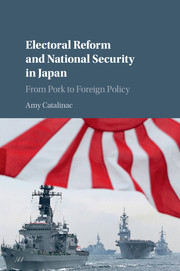Book contents
- Frontmatter
- Dedication
- Contents
- List of Tables
- List of Figures
- Acknowledgments
- 1 Introduction
- 2 Electoral Systems, Electoral Strategies, and National Security
- 3 Measuring Electoral Strategies with Thousands of Candidate Election Manifestos
- 4 Electoral Strategies Shifted from Pork to Policy
- 5 Electoral Strategies Shifted to National Security
- 6 Electoral Strategies of Opposition Focused on Policy
- 7 Impact on Security Policy
- 8 Conclusion
- References
- Index
3 - Measuring Electoral Strategies with Thousands of Candidate Election Manifestos
Published online by Cambridge University Press: 05 February 2016
- Frontmatter
- Dedication
- Contents
- List of Tables
- List of Figures
- Acknowledgments
- 1 Introduction
- 2 Electoral Systems, Electoral Strategies, and National Security
- 3 Measuring Electoral Strategies with Thousands of Candidate Election Manifestos
- 4 Electoral Strategies Shifted from Pork to Policy
- 5 Electoral Strategies Shifted to National Security
- 6 Electoral Strategies of Opposition Focused on Policy
- 7 Impact on Security Policy
- 8 Conclusion
- References
- Index
Summary
Testing the four hypotheses outlined in Chapter 2 required a means of measuring my quantity of interest, which is candidate electoral strategy. In an ideal world, we might want to run the following experiment. First, we would randomly assign candidates to multimember or single-member districts and to ruling and opposition parties, respectively, and inform them that the constitutional structure under which they would be expected to deliver on promises made during election campaigns was British-style parliamentary. Second, we would announce an election. Third, we would place each candidate in a room on their own, give them a piece of paper of identical size, and instruct them to write anything they wanted on this piece of paper, with the proviso that it would be the only information voters would receive about them before casting their vote. Finally, we would collect up all these pieces of paper and use them to compare the extent to which candidates running in both kinds of districts and from both kinds of parties emphasized pork, policy, and within the latter category, national security policy. While this experiment is impossible in the real world, a combination of near-draconian campaign restrictions in Japan, the practice of requiring candidates for office to produce candidate election manifestos, which local electoral commissions are required to distribute to all registered voters in the district before the election, and advances in methods for quantitative text analysis enabled me to construct indicators of candidate electoral strategy that approximate this ideal for the 7,497 serious candidates running in the eight House of Representatives (HOR) elections held between 1986 and 2009.
This chapter proceeds as follows. First, it explains why existing approaches to measuring candidate electoral strategy do not capture my quantity of interest. Second, it explains why the persistence of unusual, near-draconian campaign restrictions across time, space, and technology in Japan have the effect of making a medium of communication that is available to all candidates, the candidate election manifesto (senkyo koho in Japanese), reliable material from which to measure this quantity of interest. Third, it addresses potential threats to the reliability of the manifesto, including the possibility that it is unimportant and therefore not taken seriously by candidates and the possibility that the party leader is disciplining what conservative candidates write in their manifestos after electoral reform.
- Type
- Chapter
- Information
- Electoral Reform and National Security in JapanFrom Pork to Foreign Policy, pp. 60 - 109Publisher: Cambridge University PressPrint publication year: 2016



